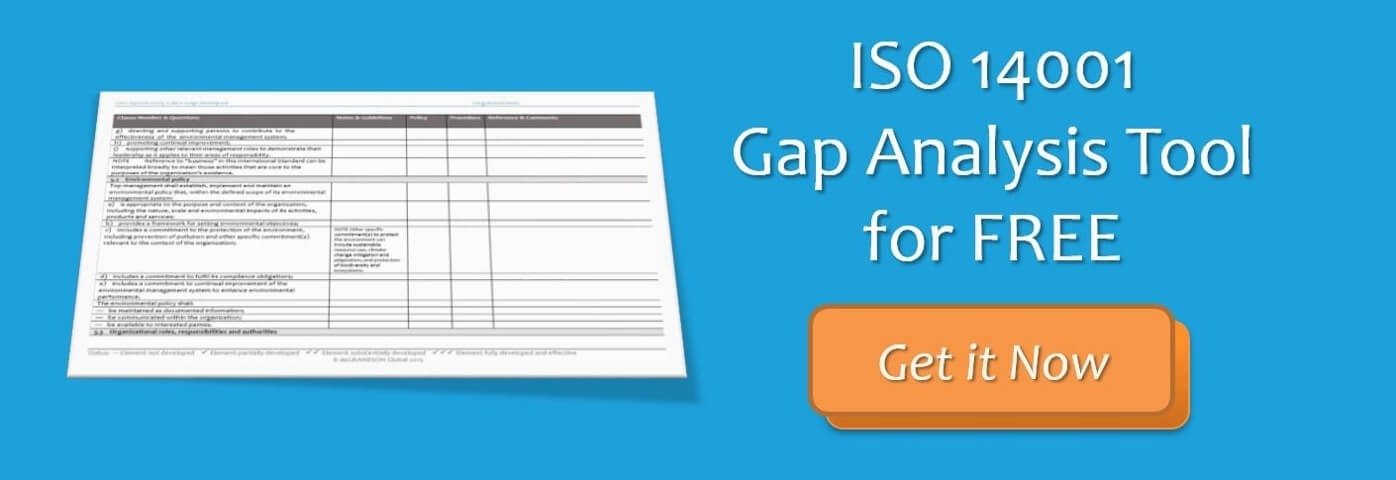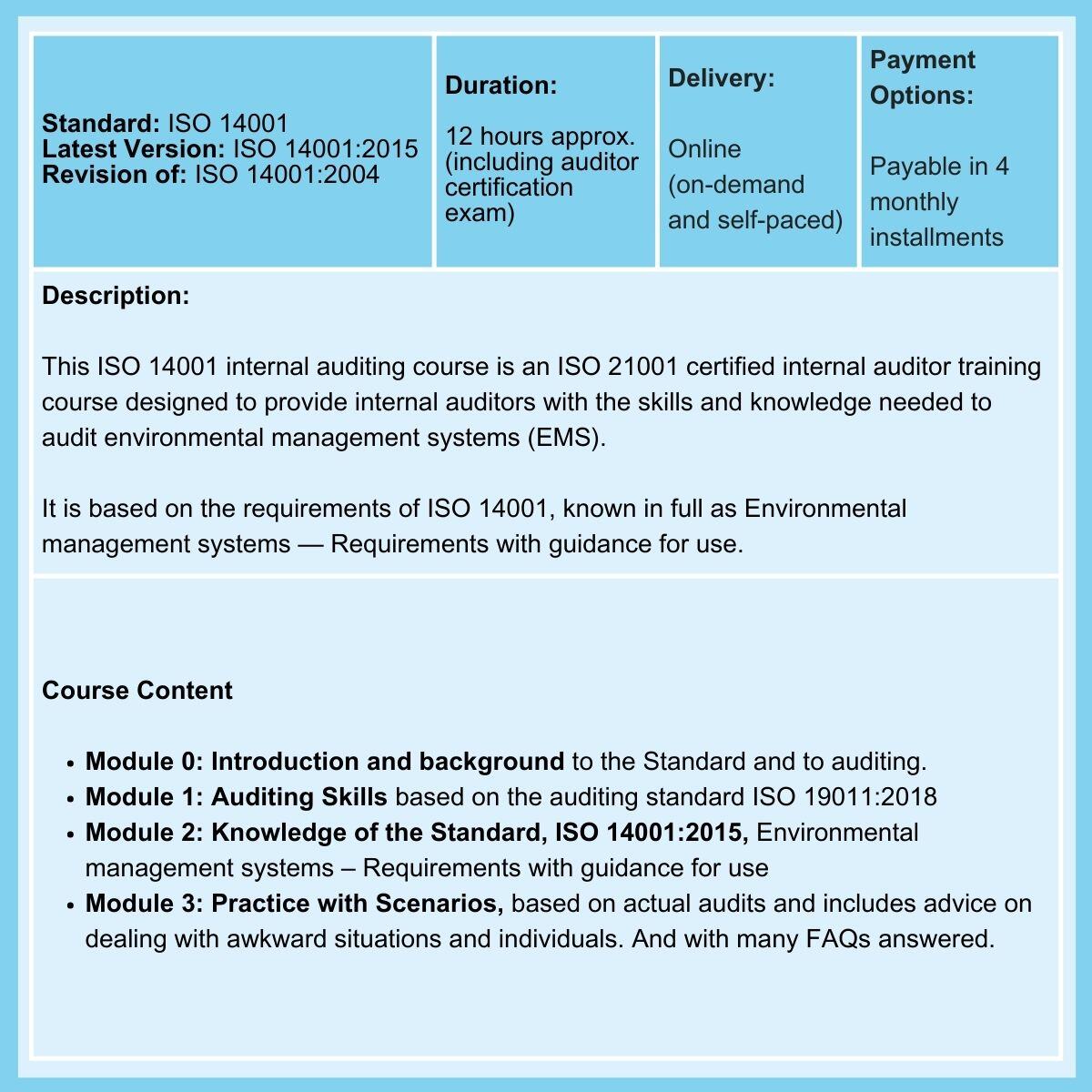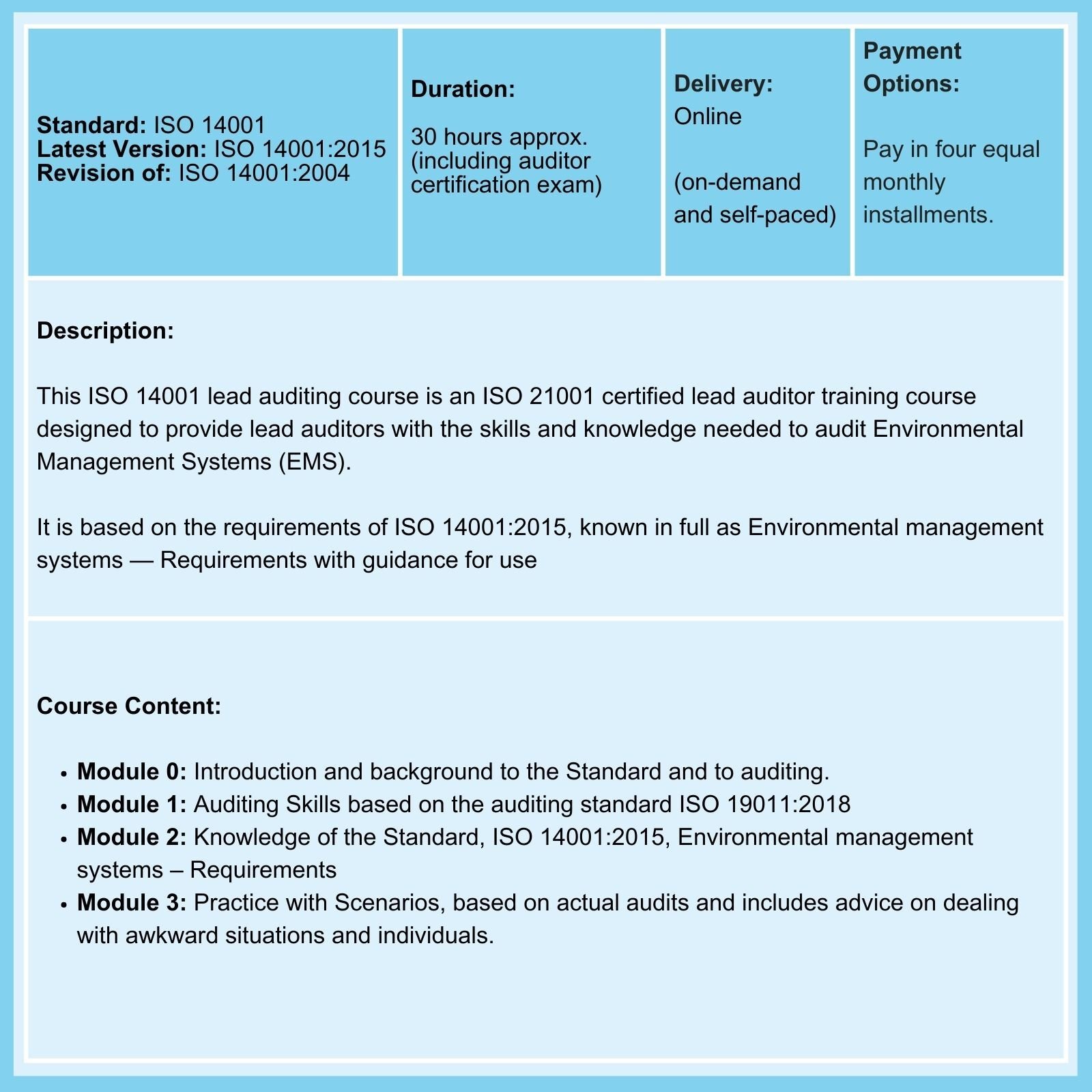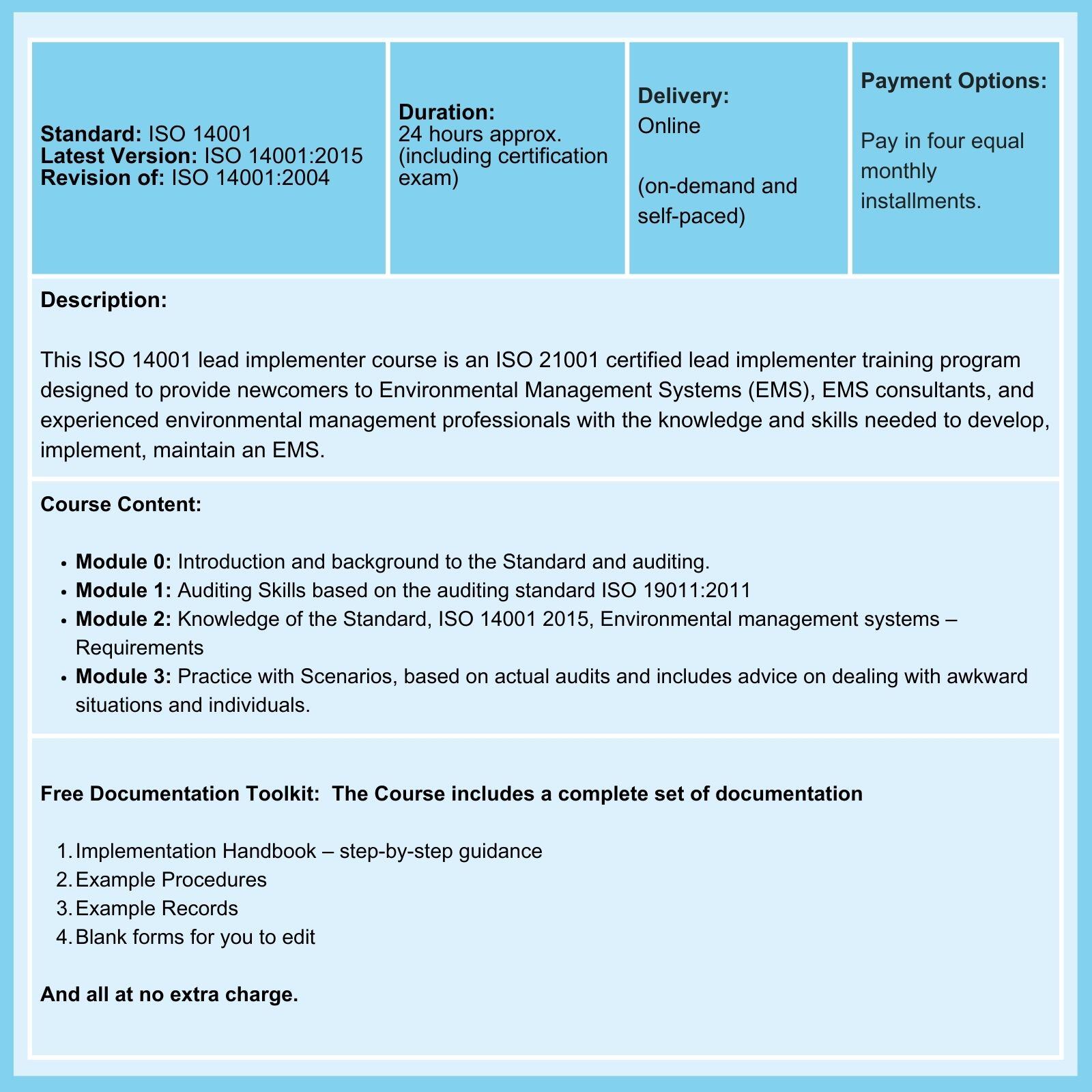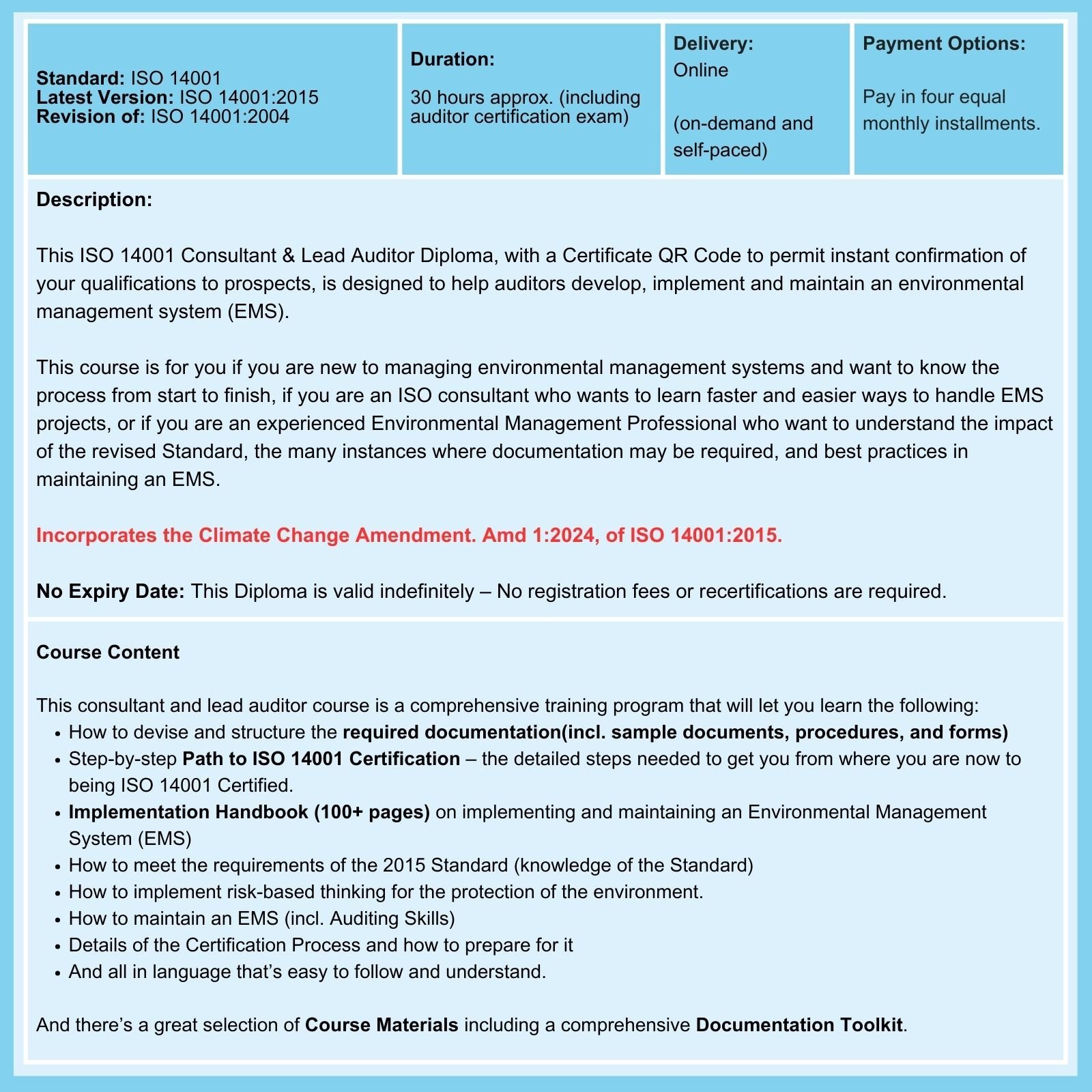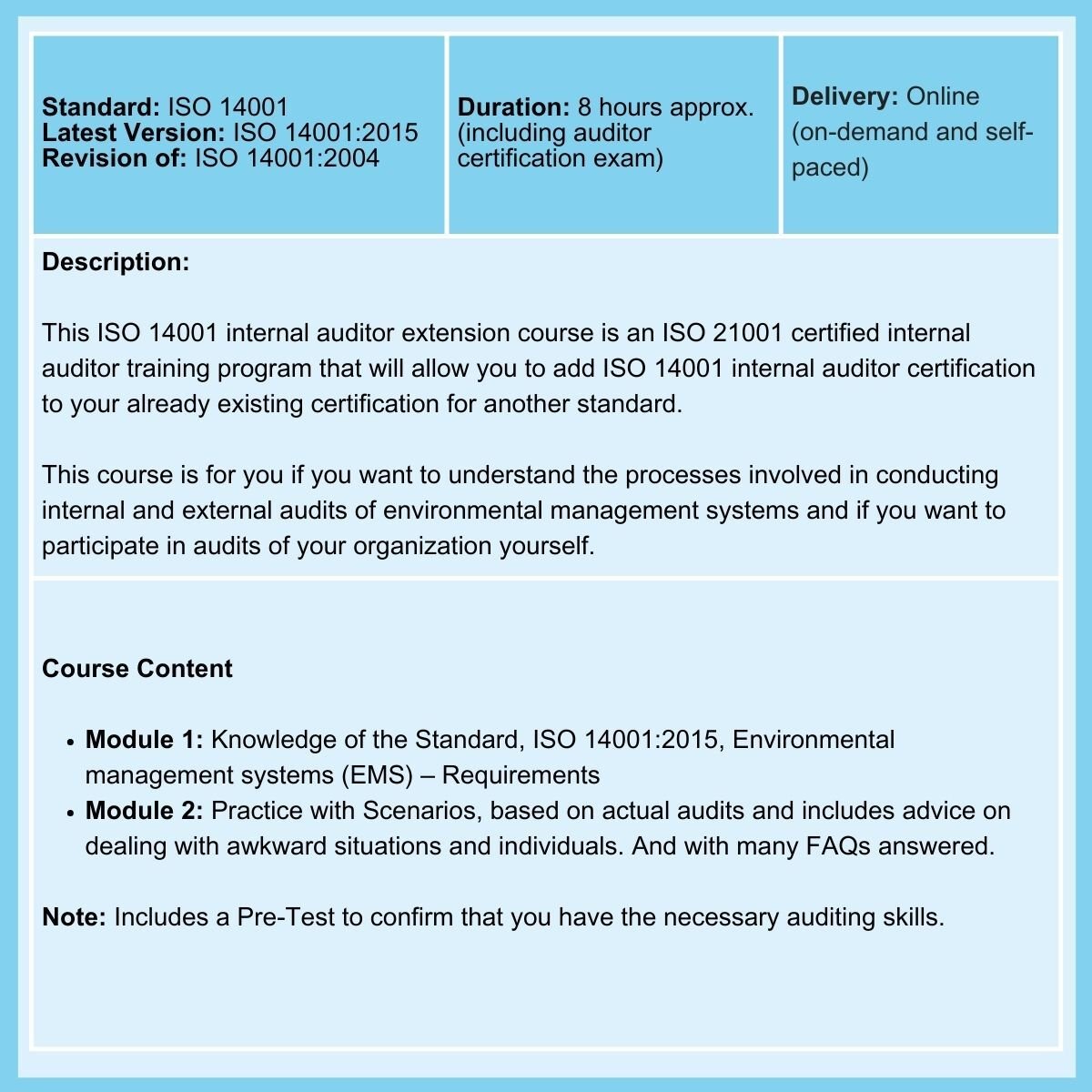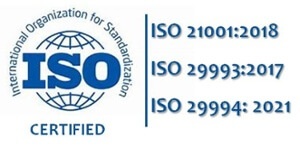
Always start with a Gap Analysis
Whether you are starting from 'scratch' or whether you already have an Environmental Management System, a Gap Analysis is essential to establish the issues and topics that require correction or improvement and which may inform your ISO 14001 EMS Implementation Project.
How to Get Started with Performing an ISO 14001 Gap Analysis
To start an ISO 14001 gap analysis, you would want to use the services of a person experienced in ISO 14001 (environmental management systems), perhaps yourself or a member of your Project Team.
The ISO 14001:2015 Gap Analysis Tool provided as part of our ISO 14001 training program (ISO 14001 Lead Implementer Course) documentation is ideal.
If you doubt the interpretation of any particular requirements and your current status against it, you should consult ISO 14004:2016, the guidance standard.
ISO 14001 Gap Analysis Checklist Sample
If you need more help getting started, here's a sample page from the ISO 14001:2015 Gap Analysis Tool that you can use.
ISO 14001 Gap Analysis Checklist |
||||
| Clause Number and Question | Notes and Guidelines | Policy | Procedure | Reference and Comments |
| g) directing and supporting persons to contribute to the effectiveness of the environmental management systems; | ||||
| h) promoting continual improvement; | ||||
| i) supporting other relevant management roles to demonstrate their leadership as it applies to their areas of responsibility. | ||||
| NOTE: This international standard refers to "business" broadly as those activities that are core to the organization's purpose. |
||||
| 5.2 Environmental Policy | ||||
Top management shall establish, implement, and maintain an environmental policy that, within the defined scope of its environmental management system; |
||||
| a) is appropriate to the purpose and context of the organization, including the nature, scale, and environmental impacts of its activities, products, and services | ||||
| b) provides a framework for setting environmental objectives; | ||||
| c) includes a commitment to the protection of the environment, including prevention of pollution and other specific commitment(s) relevant to the context of the organization; | NOTE: Other specific commitment(s) to protect the environment include sustainable resource use, climate change mitigation and adaptation, and protection of biodiversity and ecosystems. |
|||
| d) includes a commitment to fulfill its compliance obligations; | ||||
| e) includes a commitment to continually improving the environmental management system to enhance environmental performance. | ||||
| The environmental policy shall: | ||||
|
||||
|
||||
|
||||
— Element not developed ✓ Element partially developed ✓✓ Element substantially developed ✓✓✓ Element fully developed and effective |
||||
Assessing Your Compliance with ISO 14001 Requirements
The usual approach to categorizing your compliance with the individual requirements of ISO 14001 is to mark your organization:
√√√ fully compliant with the requirement – no change to current practice required
√√ partially compliant with the requirement – some change to current practice required
√ little compliance with the requirement – a significant shift in current practice required
X noncompliant with the requirement – significant change, perhaps disruptive, required
Benefits of Performing a Gap Analysis:
- You get a detailed and categorized list of current deficiencies against the requirements of ISO 14001:2015.
- You get a solid foundation to develop a feasible EMS Project Plan.
- You can identify opportunities for improvement in your current EMS.Related Course
Related Courses
Related Articles
- Environmental Aspects - meeting the ISO 14001 Requirements
- Why ISO 14001 matters to SMEs
- ISO 14001 Free Implementation Handbook (100+ pages)
deGRANDSON Global is an ISO Certified Educational Organization
We have chosen ISO 21001 certification because, unlike IRCA and Exemplar badges (which, in our opinion, are commercially compromised), it is based on independent third-party assessment. It is a 'university grade' standard used globally by schools, colleges, and universities to demonstrate competence.
We provide Courses for ISO (001, ISO 13485, ISO 14001, I O 17025, ISO 27001. ISO 45001, Risk Management, Data Protection, and more.
